This Stunning Caribbean Island Has White-sand Beaches, a National Park, and an Epic Underwater Trail for Snorkelers
All Caribbean islands are not created equal. Some embody the quintessential fairy-tale facets of the tropical paradise, with sugar-sand beaches and awe-inspiring natural wonders. St. John, one of the three main U.S. Virgin Islands, fits this bill.
The island is mainly accessible by boat, though car and passenger ferry service operate all day from nearby and much more cosmopolitan St. Thomas. Many visitors also arrive by private yacht. Anyone wanting to come by plane, though, is out of luck as there's no airport here.
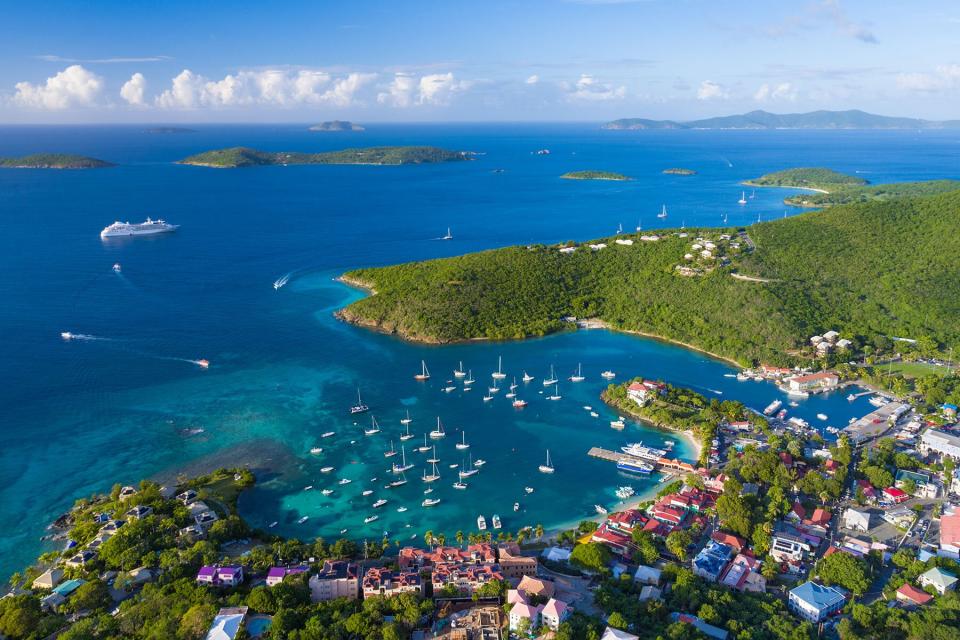
cdwheatley/Getty Images
In addition to being the most remote of the primary U.S. Virgin Islands, St. John is also the smallest, clocking in at just 20 square miles. But this tiny package is loaded with some of the best that the U.S. Virgin Islands has to offer.
A great deal of those bests center on eco-travel pursuits, as two-thirds of the island is covered by the Virgin Islands National Park, established in 1956. The Virgin Islands Coral Reef National Monument, established in 2001, further expands environmental protections to the undersea world surrounding the island.
The result is an unspoiled paradise — no passport required — offering innumerable opportunities to connect with the natural environment by land and sea.
Best Time to Visit St. John
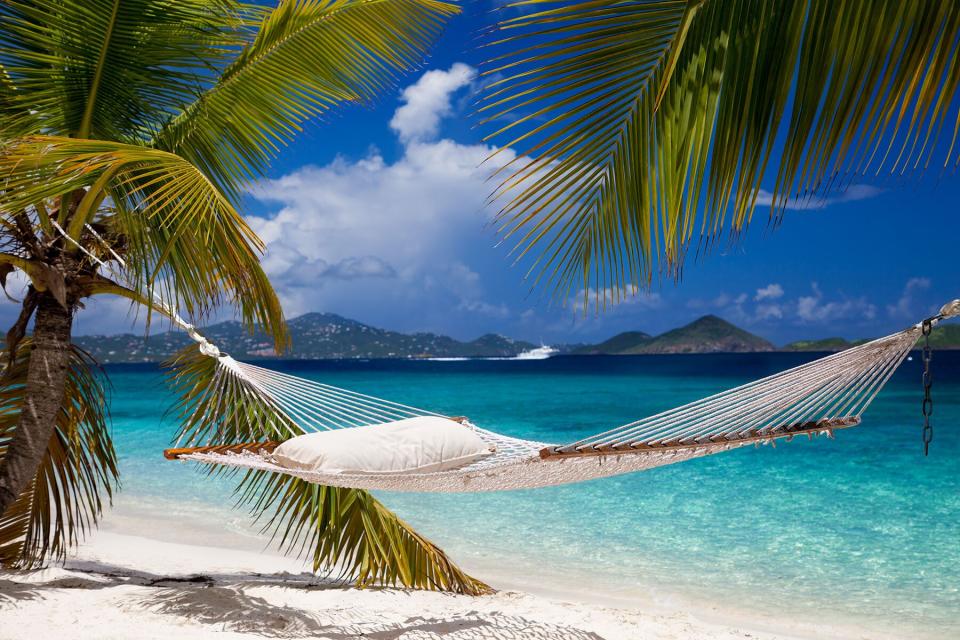
cdwheatley/Getty Images
The better question is: What time is good for you? St. John is blessed with a magical combination of warm weather and persistently cooling trade winds throughout the year. During the day, the highs average around the low to mid-80s, while overnight temperatures generally hover within the low 70s.
Rain? Nestled, as it is, in the heart of the tropics, St. John does see its fair share of rain. The island's verdant hills wouldn't be so beautifully green without it. However, there's no set rainy season. At the same time, you certainly wouldn't consider St. John a desert island. Instead, rain generally tends to come and go, rarely washing out full days, much less multiple days in a row. Months with the highest precipitation: September, October, and November.
Crowds? If they aren't your thing, then you may want to steer clear of the peak winter season, which runs from mid-December through March. In a bit of a surprise, though, crowds are also always big in the middle of the summer for July Fourth. The reason: St. John Carnival, which kicks off in early June with a number of low-key pageants and concerts. The excitement builds throughout the month, culminating on Emancipation Day (July 3) and Independence Day (July 4) with a parade, fireworks, and nonstop fun and concerts in the Carnival Village.
On the opposite end of the fun spectrum is hurricane season, spanning from June through November. Late August to mid-October tends to constitute the peak period for storms, with major hurricanes being rare in June, July, and November.
Best Things to Do on St. John
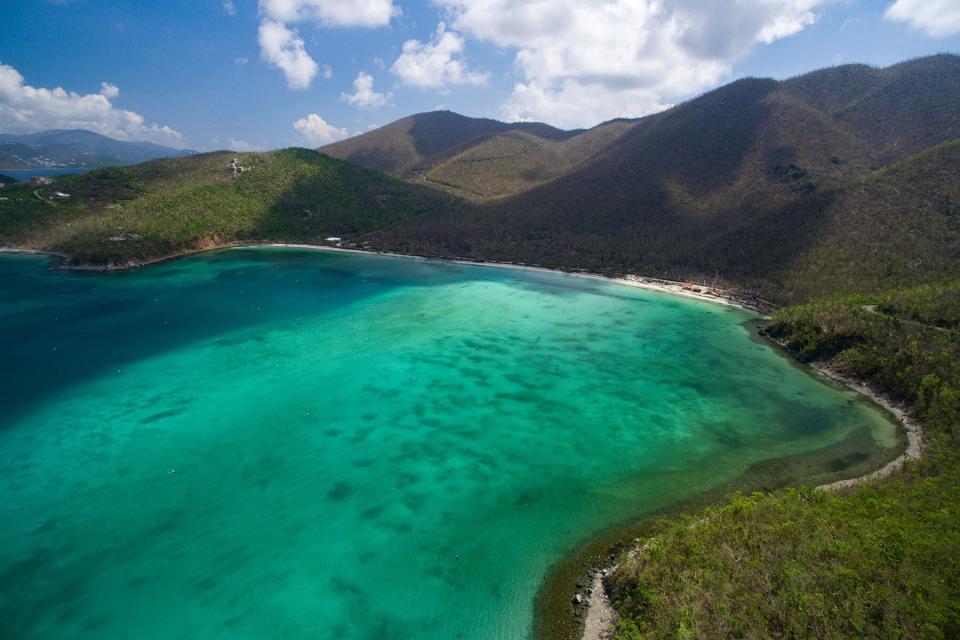
Steve Simonsen/Courtesy of USVI Department of Tourism
No matter what time of year you visit St. John, you'll always find a plethora of fun things to do. Top of the list for many is enjoying the island's many unspoiled beaches.
Trunk Bay, Cinnamon Bay, and Maho Bay are the most famous — and for good reason. The stunning seascapes along these shores are the stuff of Caribbean beach fantasies. At the same time, though, lesser-known shores, like those lining Honeymoon Beach, Leinster Bay, Jumbie Bay, Francis Bay, and Salomon Bay, should not be overlooked.
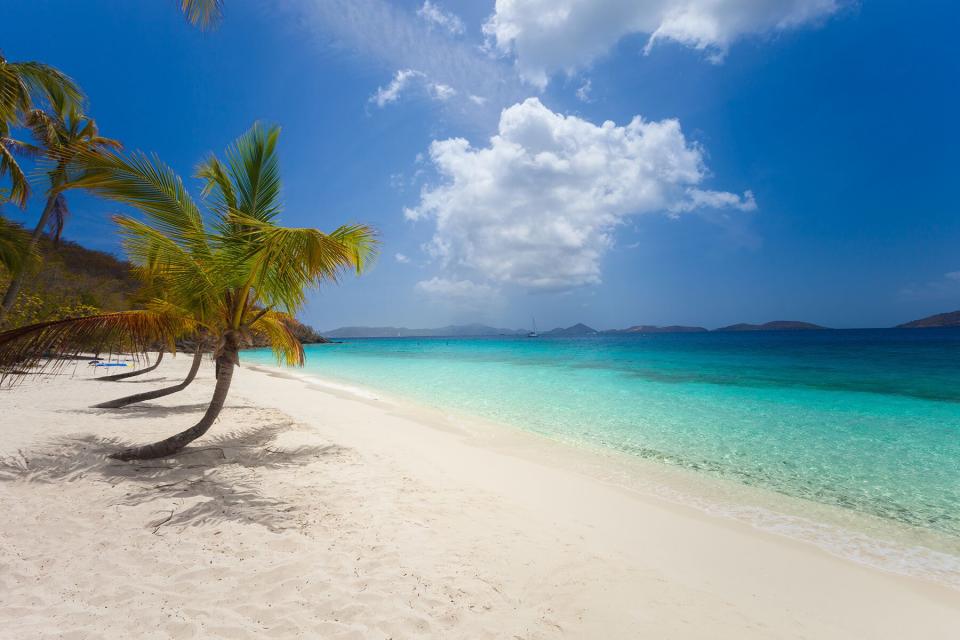
cdwheatley/Getty Images
Several of St. John's best beaches are solely accessible by a second favorite activity here: hiking.
St. John's 20 square miles are crisscrossed with a network of more than 20 hiking trails. Many are of the low- to medium-impact variety, with some measuring less than three miles. All of them, though, lead to amazing natural wonders or historical attractions worth discovering.
One such historical attraction, known simply as the petroglyphs, opens a rare window into one of the Caribbean's indigenous inhabitants: the Taino Indians.
Ancient tribal carvings left here centuries ago are set into a rock wall at the base of a waterfall located deep within the Reef Bay valley. If possible, plan to hike out here after a healthy rain to get the full effect of this mystical place. When trekking out to the petroglyphs along the Reef Bay Trail, hikers also pass the ruins of four colonial-era sugar estates. This offers unique access to yet another era of St. John's storied history.
However, not all of St. John's trails run over dry ground. The Coral Reef Underwater Park Trail at Trunk Bay, for example, introduces snorkelers to the island's colorful undersea world. A series of signs along the trail tell of the different coral and fish species snorkelers may encounter.
Related: There's a Floating Taco Bar in the Caribbean — and You Can Only Get There by Boat
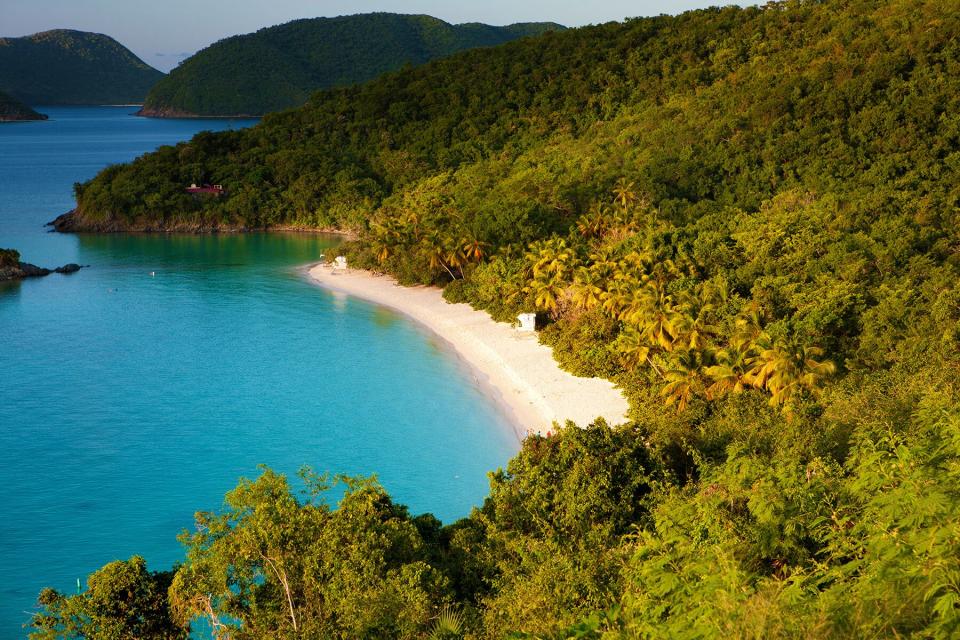
cdwheatley/Getty Images
When not trekking through the bush or diving underwater in search of St. John's natural treasures, visitors delight in traipsing around the famously eclectic shops and boutiques in Cruz Bay, St. John's main town. Mongoose Junction, in particular, is popular for handmade local jewelry and artwork, as well island fashion, gifts, and more.
Where to Stay on St. John
As you might expect in a destination as dynamic and eco-focused as St. John, accommodation options are vast and varied. One thing you won't find here, though, is all-inclusive resorts. But what it lacks in all-inclusive amenities, it makes up for in features that get you closer to the heart of what makes this little island so special.
The Westin St. John Resort Villas
The Westin St. John Resort extends along 1,200 feet of pristine, white-sand beach, covering a total of 47 acres with studio, one-, two-, and three-bedroom accommodations. Guests can even opt for a townhouse (2,850 square feet) with space for up to eight adults.
Cinnamon Bay Beach & Campground
For those keen on visiting St. John to connect with nature, Cinnamon Bay Beach & Campground is a solid choice. Cottages, eco-tents, and bare sites are available, offering guests the opportunity to choose just how much they want to rough it. Here, waves crash along Cinnamon Bay, lulling you sleep. Mornings start with a dip in a pretty beach. And wild donkeys vie for the best shaded spots on the sand. For true nature lovers, it doesn't get much better than this.
Estate Lindholm
Originally established as a plantation by Dutch settlers in the 1720s, Estate Lindholm today offers stunning views from its hilltop perch high above Cruz Bay. The property has 17 guest rooms, each decked out in elegant furnishings and decor echoing 300 years of St. John history.
St. John Villa Rentals
Undoubtedly the most popular form of guest accommodations on St. John are villa rentals. For the best rates on the widest selection of properties, St. John Villa Rentals is great option. Booking through this community of local owners and property managers ensures that travelers avoid added service fees.

